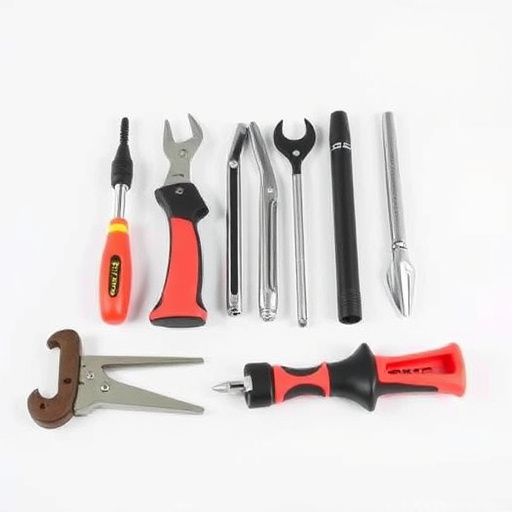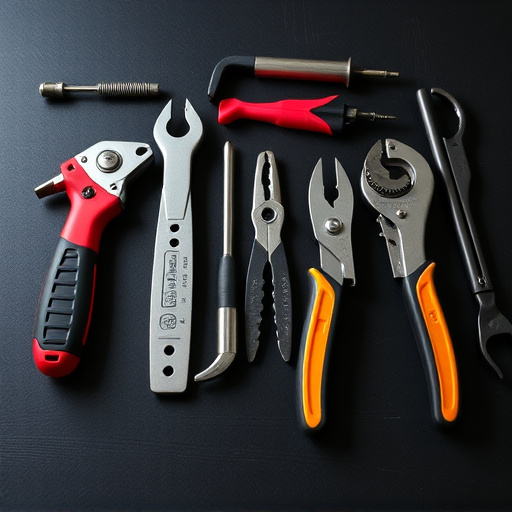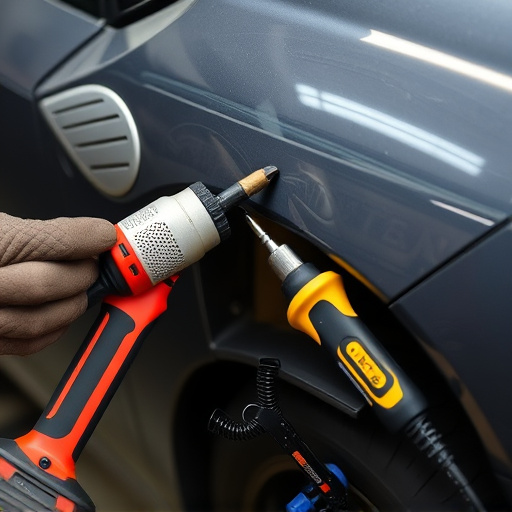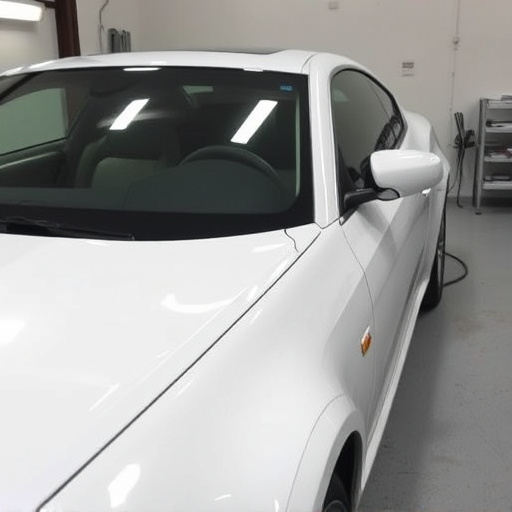Evaluating repair authorization service (RAS) performance is key to enhancing efficiency and customer satisfaction in the automotive sector. By tracking metrics like turnaround time, approval rates, and customer scores, organizations can identify trends and issues, such as training gaps or administrative bottlenecks. Adopting digital tools and streamlining processes, including structured workflows and real-time updates, optimizes claim processing. Specialized software integrates with auto repair shops to monitor key indicators, predict workloads, and continually improve RAS efficiency.
In today’s competitive landscape, efficient repair authorization services are vital for maintaining customer satisfaction and operational effectiveness. This article explores comprehensive strategies to audit and optimize these processes. We delve into key areas such as assessing performance, streamlining workflows, and employing robust metrics and tools. By implementing best practices in repair authorization service management, businesses can enhance efficiency, reduce costs, and elevate the overall customer experience.
- Assessing Repair Authorization Service Performance
- Streamlining Processes for Efficiency and Effectiveness
- Metrics and Tools for Monitoring Repair Authorization Services
Assessing Repair Authorization Service Performance

Evaluating the performance of a repair authorization service is a key step in optimizing its efficiency and overall effectiveness. This involves a comprehensive analysis of various metrics that reflect the quality and speed of the service provided. Key performance indicators (KPIs) such as average turnaround time, approval rates for repairs, and customer satisfaction scores offer valuable insights into the service’s strength and areas needing improvement.
By examining these KPIs, organizations can identify trends and patterns in repair authorization outcomes. For instance, a high rejection rate for certain types of auto painting or auto glass replacement claims might indicate inconsistencies or gaps in training for assessors handling those specific cases. Similarly, analyzing the efficiency of tire services approvals could reveal administrative bottlenecks that need addressing. Such insights enable data-driven decisions to enhance service performance and ensure that authorized repairs are completed promptly and within budget.
Streamlining Processes for Efficiency and Effectiveness

In the realm of automotive services, efficiency is key to delivering exceptional customer experiences. Streamlining processes within a repair authorization service (RAS) is a strategic move to enhance overall performance and effectiveness. By implementing structured workflows and digital tools, RAS can optimize every step from initial claim processing to final approval. This includes digitizing paperwork, automating data entry, and integrating systems for seamless communication between insurers, repair shops, and policyholders.
A well-organized process ensures that repairs, including hail damage repair and automotive collision repair, are handled promptly. For instance, digital platforms can facilitate real-time updates on claim status, allowing customers to track their car bodywork services with transparency. This streamlined approach not only improves customer satisfaction but also reduces the chances of errors and delays, ultimately making the RAS more efficient and reliable in managing diverse repair needs.
Metrics and Tools for Monitoring Repair Authorization Services

Monitoring the efficiency of a repair authorization service is key to ensuring optimal performance and customer satisfaction. The right metrics and tools can provide valuable insights into every stage of the process, from initial request to final approval. Key metrics to track include turnaround time, which measures how swiftly authorizations are processed, and accuracy rates, gauging the percentage of requests that are approved on the first attempt.
Using specialized software designed for repair authorization services can greatly enhance this monitoring capability. Such tools often offer real-time data visualization, allowing managers to quickly identify bottlenecks or areas needing improvement. For instance, a dashboard might display historical trends in approval times for various service types, such as car dent repair or auto body services, helping to predict and manage future workloads more effectively. Additionally, these platforms can integrate with existing systems in auto repair shops, streamlining data exchange and improving overall operational efficiency.
Auditing and optimizing repair authorization services are essential steps towards enhancing overall efficiency. By implementing strategies outlined in this article, such as performance assessment, process streamlining, and leveraging appropriate metrics, organizations can significantly improve the effectiveness of their repair authorization processes. These tactics ensure that authorized repairs are completed promptly, reducing downtime and enhancing customer satisfaction, ultimately strengthening service quality and operational resilience.














